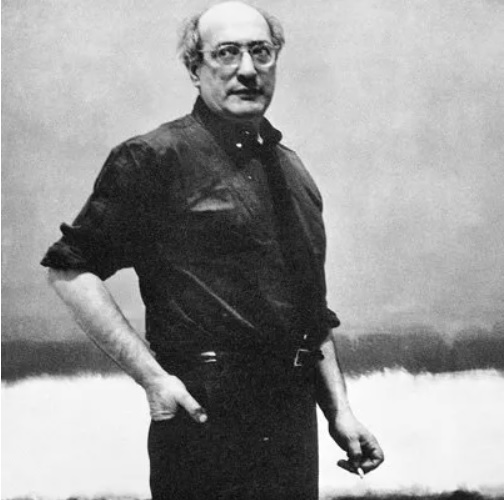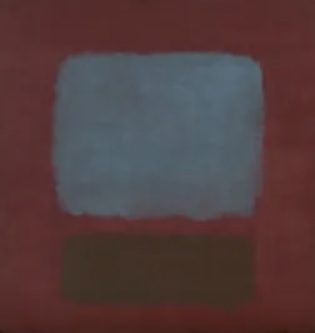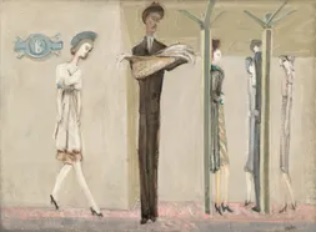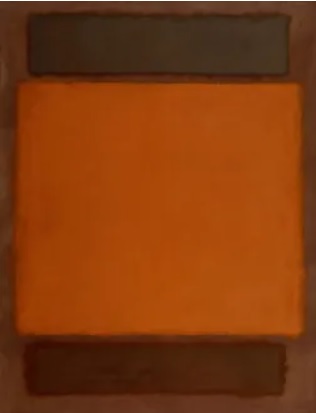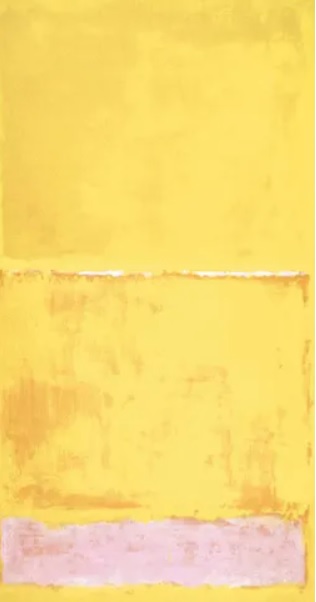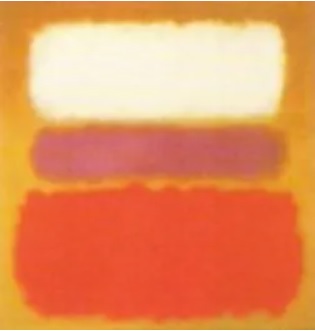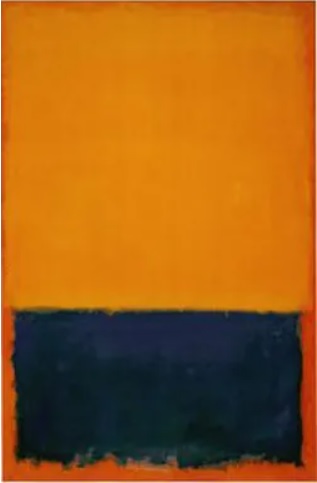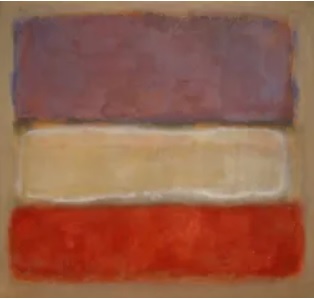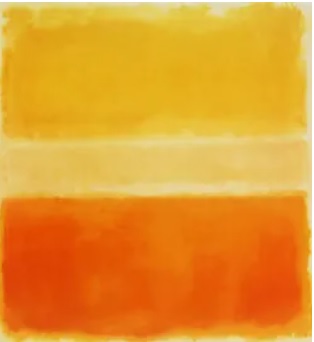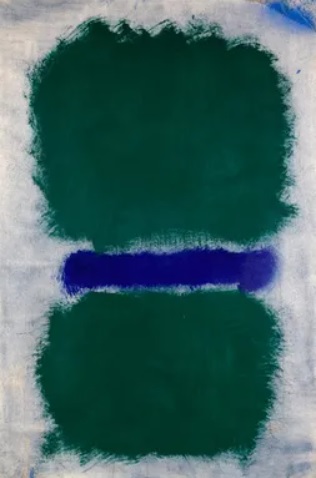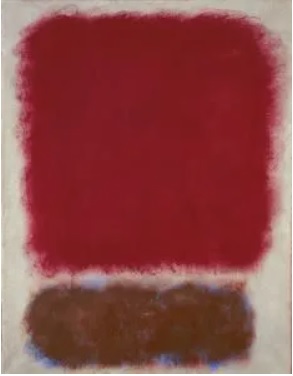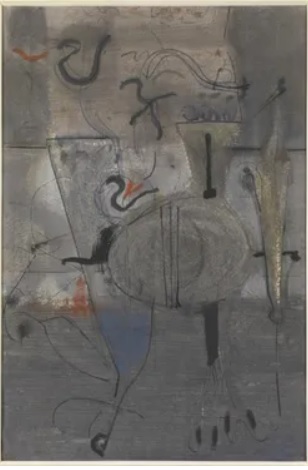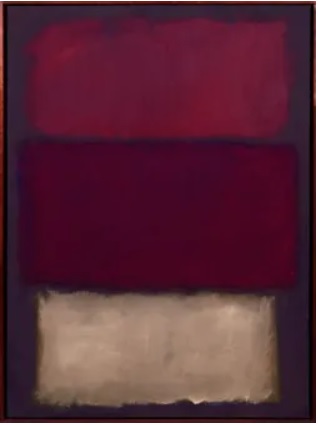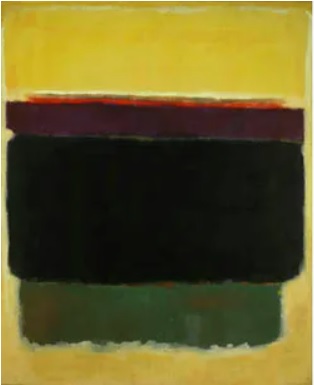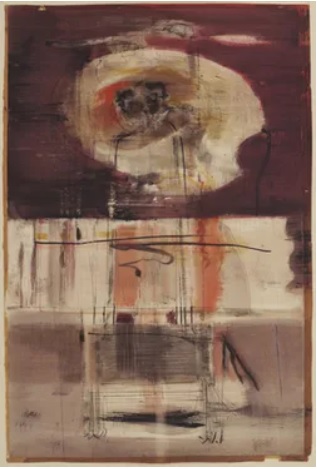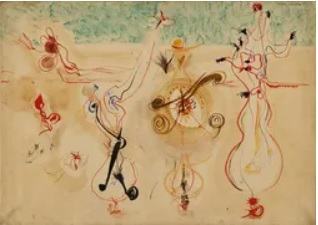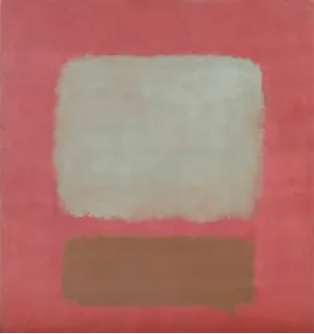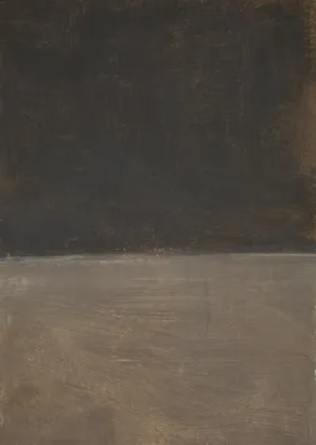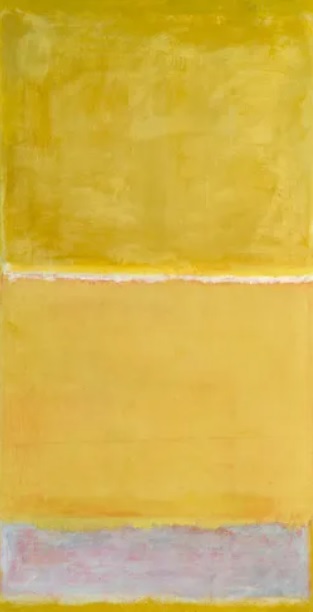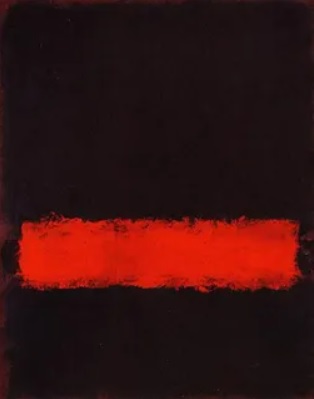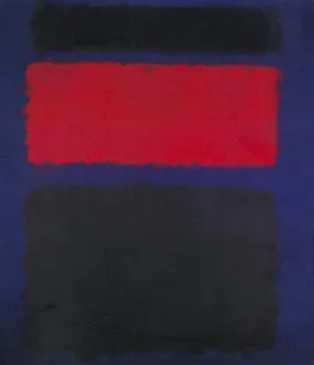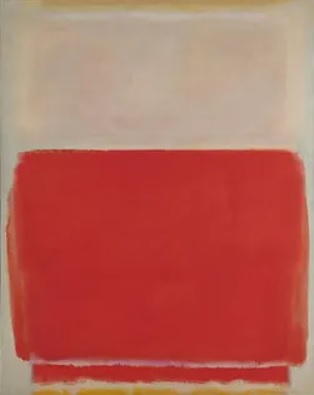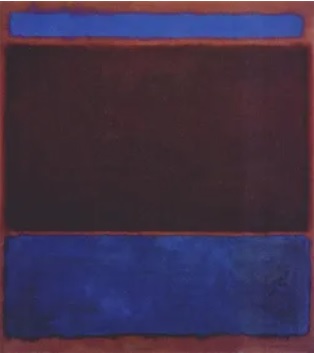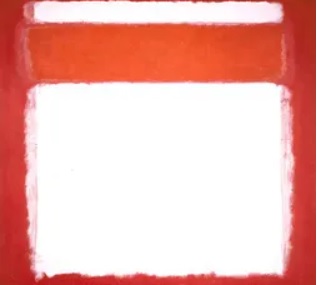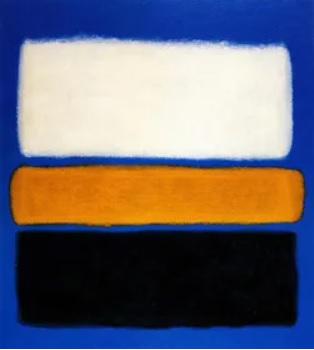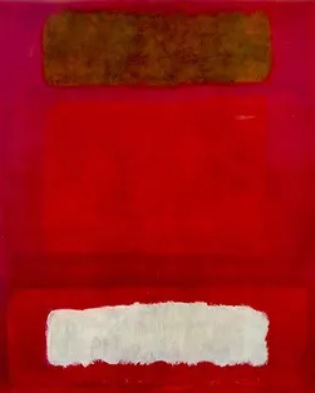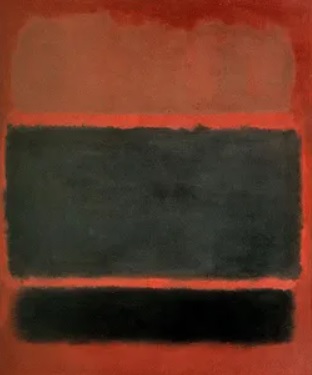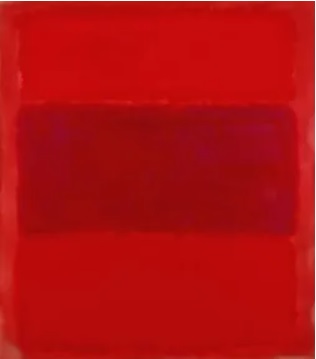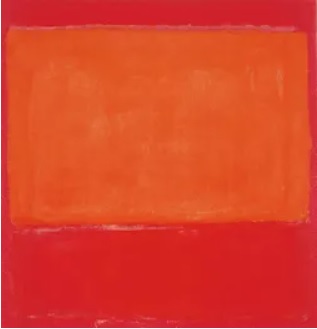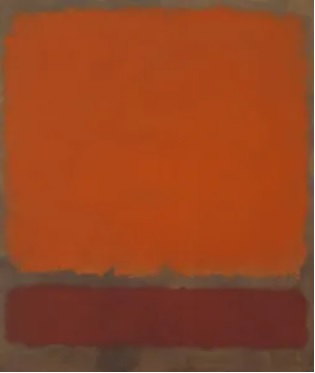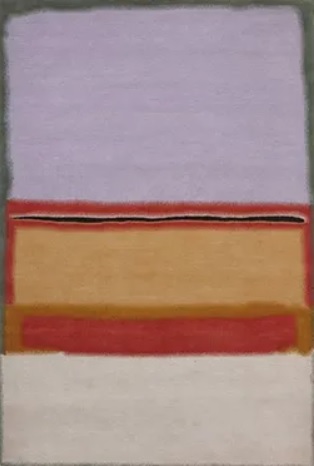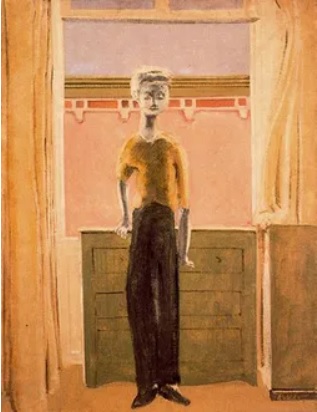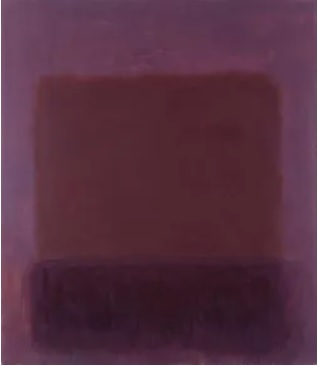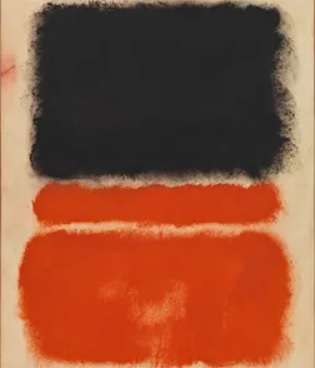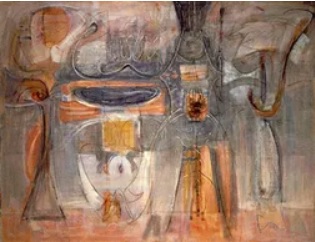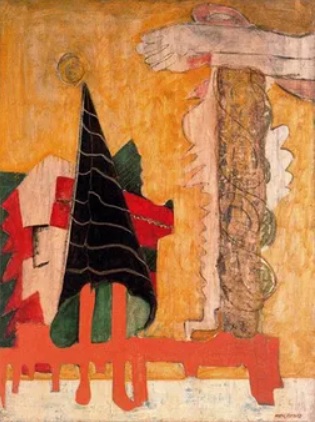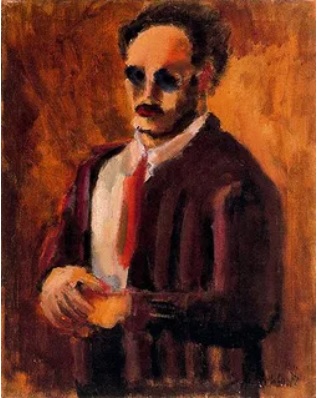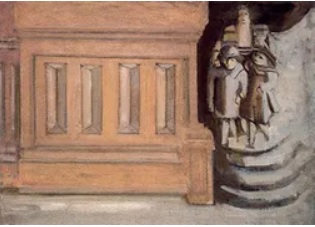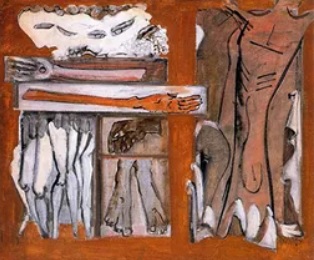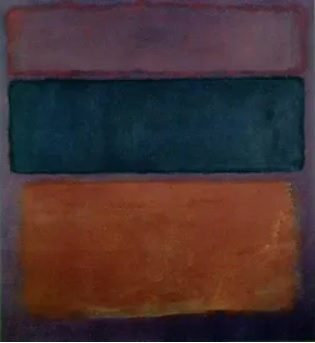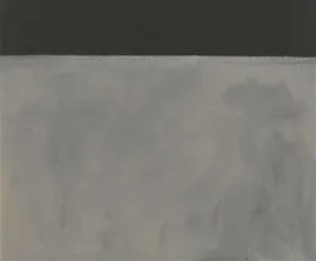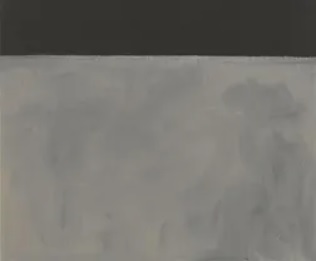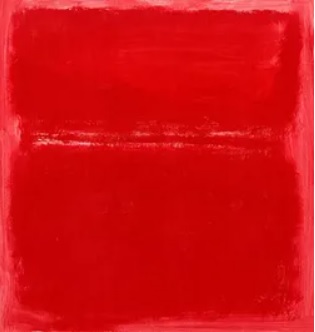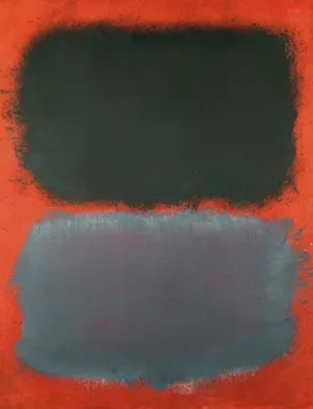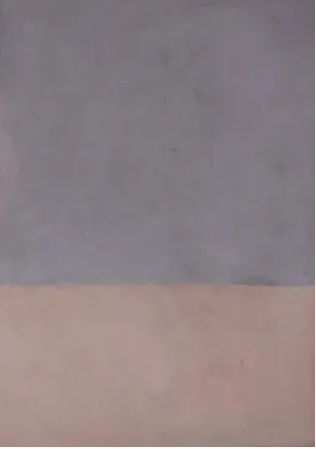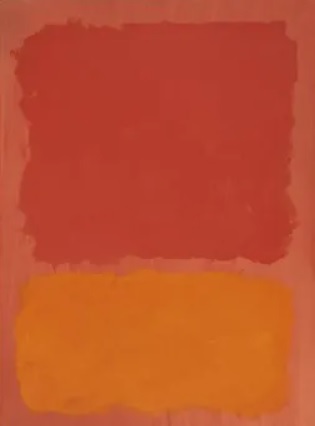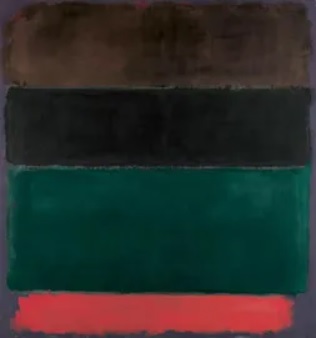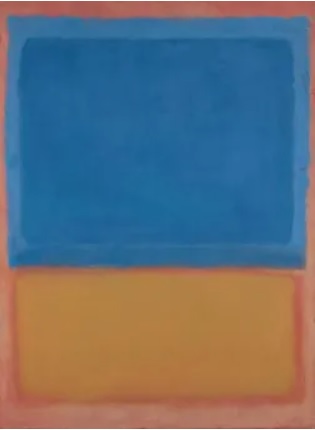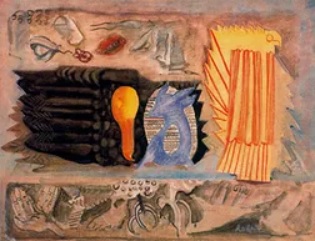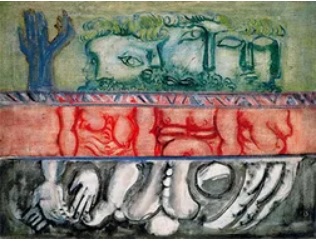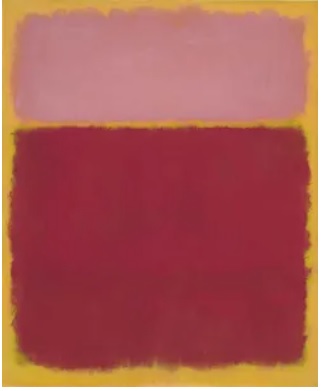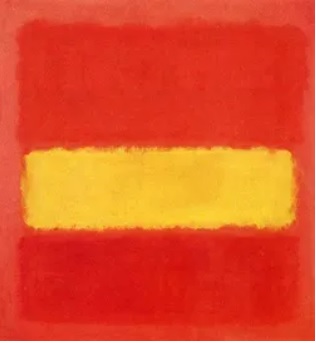Mark Rothko was an American Abstract artist of the mid-20th century. Although Rothko was a very well-educated and academic man who spoke four languages, his artistic skills were largely innate, as he had next to no training in painting or drawing.
Nonetheless, he knew great fame and critical acclaim as a member of the first major American artistic movement recognised by the art world, abstract expressionists. His fame and fortune, however, sat heavily with him. A confirmed socialist, Rothko believed that art was truly an expression of emotion and social circumstance and he had a deep distrust for money and material wealth.
His main concern was that people may want to buy his paintings because they were fashionable, not because they were moved by them. In fact, he is said to have refused to sell canvases to people who “did not react correctly” to the paintings in his gallery. Most famous for his colourfield paintings or multi-forms as they were also known, today Rothko’s paintings sell for tens of millions of dollars and can be found in galleries and private collections all over the world. Mark Rothko took his own life in his studio in New York on 25th February 1970. He was 66 years old. His work is also frequently reproduced as art prints for his many fans.
Influences
Apart from a brief time studying with cubist Max Weber, Rothko’s artistic abilities were essentially self-taught. However, Weber’s greatest influence on the young student was that he awakened in him a profound desire to express emotion through painting and this was the driving force for Mark’s work throughout his life. During his formative years as an artist, Rothko gravitated to the works of surrealist artists and expressionists who made wonderful use of colours, like Swiss-born Paul Klee and French artist and fauvist, Georges Rouault. These early influences would remain with the artist throughout his career and he would become a master of expression through colour.
Many of Rothko’s influences were intellectual. Mark believed that there was little left to say, artistically, about portraits and landscapes and there was a need to discover new ways to express the important things in life; the strong feelings raised by what was happening in Nazi Germany and the general fascist views around the world, not to mention the human condition in urban society during the post-depression years in America. His work throughout the beginning of his career took on a very childish form. Trying to express the simple and most basic feelings in life in the most uncomplicated way possible led to his Scenes in the Subway series which depict the monotony of life through rhythmic use of colour and shapes, and minimal details.
Additional intellectual influence came from the work of philosopher, Friedrich Nietzsche, specifically, The Birth of Tragedy. Nietzsche’s work basically outlines a theory that the lessons of Greek myth are the building blocks for a meaningful life, and without the guidance of the tragedies, man is doomed to live an ignorant and joyless existence. Armed with this clear mandate, Rothko began to try to free man from his gaol of expressionless being. Through his art, Mark worked to reinstate a spiritual and emotional framework for modern living. Most interestingly his interpretation of this high intellectual ideal was light-filled colour in all its glorious forms.
Early Rothko – the Realist Works
The vast majority of Rothko’s realist work came at the beginning of his career, even before he had taken up art as full-time work, and it was largely surrealist in nature. Heavily influenced by the psychologically intriguing ideas promoted by Surrealist artists such as Joan Miro’s, Slow Swirl at the Edge of the Sea (1944), showed Rothko’s abilities at their absolute best. In this emotive work, Mark tried to pare back his reality to express only the bare bones of experience.
The resulting painting had a light-hearted quality to it, while at the same time providing a clear narrative of the joyful life experience of being by the sea. Rothko’s style very quickly morphed away from the realist themes as he expanded his imagery to include mood inspiring colours of modern abstract artists such as Mondrian, which all resulted in what he considered a purer expression of emotion; less realism but more reality of emotion.
Abstract Expressionism
By the mid 1940’s, Rothko’s work was completely abstract. He had joined the vanguard of the new American artist – abstract expressionist. This group of mostly American artists, including Jackson Pollock, Barnett Newman and Willem de Kooning had, in fact, very little common ground and was neither purely abstract, nor expressionist. What did unite them was a rebellious feeling of raw emotion, the perception of immediacy of expression and the fact that each of them was an artistic free spirit.
Born from an appreciation and subsequent rejection of the modern techniques of early 20th century Europe such as surrealism, cubism and Bauhaus, the term “abstract expressionism” was first used in the late 1920’s to describe the work of Russian painter Wassily Kandinsky. Subsequently it was used to encapsulate any non-objective artistic style of the time which evoked emotion and feeling using colour and movement.
Many of these artists, including Rothko, preferred not to name their art for fear of influencing the viewer, instead they numbered their canvases and trusted that they could speak for themselves. In Mark’s case he wanted to inspire the viewer to greater feeling and spiritual enlightenment without the guidance of labels.
Color Field Painting
By the 1950’s Rothko had matured into his signature style; colourfield paintings. Unlike some of his fellow abstract expressionist artists of the day, he had rejected the physical, sometimes violent methods of paint application in favour of a more spiritual and contemplative form of colour appreciation. These new paintings were composed of several large rectangular blocks of colour place mostly horizontally on the canvas. Sometimes vivid and latterly quite subdued, these paintings conveyed human emotion in all its splendour; from joy and ecstasy to grief and depression.
While Rothko’s friends initially thought that these works may be a step too far for critics and the general public to accept and understand, they couldn’t have been more wrong. Rothko’s works were so much more than colour, they were luminescent and organic, and their soft, blurred edges exuded life force in the emotions they described. This genius work had transcended the need for figures or scenes of nature, it had moved through convention and struck right at the living heart of the viewer. Mark had found his medium and he would continue to express himself through this method until his death in 1970. Indeed, this completely abstract form of painting is synonymous with the name Rothko and his colourfield canvases are the works which fetch exorbitant prices at auction today.
Most Important Works
Rothko’s Color Field works are certainly the most recognisable of his canvases, but to truly appreciate the evolution and skill of the artist it is important to examine his most influential creations.
Firstly, a review of Rothko’s most important works would be incomplete without the aforementioned Scenes in the Subway series, which were his most accomplished realist paintings. The series depicts faceless commuters traveling about their business in a very impressionistic way. The details that are available to the viewer are rhythmic and repetitive all of which promotes the sense of soulless monotony commonly perceived about life in New York City. Probably the most famous of the series is, Entrance to Subway (1938) and it is a great example of how, by using very limited details and bold colour in the perfect combination, the artist can still convey a clear narrative.
Perhaps some of the most infamous of Rothko’s works are The Seagram’s Murals. Commissioned by the famous drinks manufacturer to provide murals for their new restaurant in New York, The Four Seasons, Mark set about creating forty works in dark red and brown to adorn the walls on the prestigious room. He had chosen to orientate his blocks of colour in an uncharacteristic vertical plane for these murals, in an effort, he claimed, to make the dinners more uncomfortable as they ate their over-priced meals.
However, before the opening he took a change of heart, and overcome by his socialist sensibilities, he returned his advance and claimed he could not continue to work where so many disgusting capitalists would be eating and spending money. He removed his works and hid them away in his studio. Today the collection has been broken up, with some in London’s Tate Modern, some in Japan’s Kawamura Memorial Museum, and others in The National Art Gallery in Washington DC.
Finally, it is necessary to mention one of Rothko’s last projects, The Rothko Chapel. Found on the campus of St Thomas Catholic University in Houston, Texas, the Rothko Chapel is one of Mark’s most involved works as he was not only responsible for the paintings, but he was instrumental in the actual design of the building that houses them. Comprising of fourteen murals, these huge works are in purple, maroon and black and are widely considered to depict the melancholy that Mark was experiencing at the end of his life. Sadly, Rothko did not live to see the chapel completed, but it stands today as a testimony to his vision.
The Legacy of Rothko
Rothko had made specific provisions for his work after his death. He wanted to leave everything to his foundation and have a school created to encourage new artists. However, the execution of his will turned into a three-ring circus. The greed of his executors overtook them, and they began selling off his paintings for their owns gain with impunity. Ultimately, his young daughter decided to take the executors to court and after seven long years managed to have the rights transferred to her and her brother.
The executors were charged with fraud and made to paid huge fines to the family. Today the Rothko foundation is in the hands of his children and they have managed it to the letter of their father’s wishes. It would seem that even in death, Rothko made a stir. The artistic legacy to the world of modern art left by Rothko is profound. Never before, or since has an artist so blatantly disregarded the rules of art with such fantastic results. His life and work have emboldened young artists all over the world.
Not only was he a guiding light to his contemporaries, but his courage has ensured that we have risk-takers today bringing forth their own brand of rebellion for us to admire and enjoy. Today his work can be found in museums all over the world and he has become the poster child for modern art and freedom of expression.
Paintings
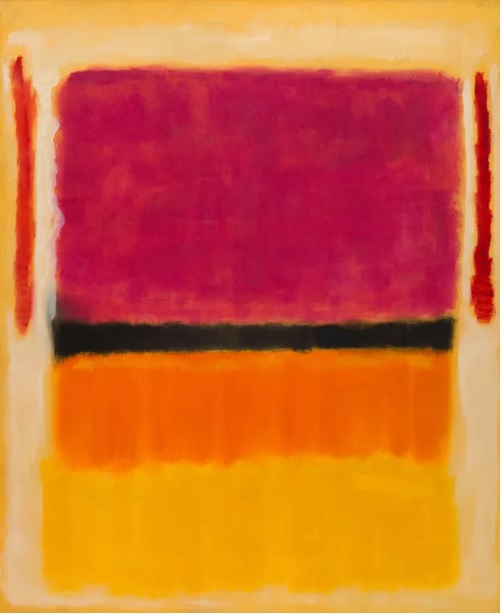
The signature style of Mark Rothko’s paintings was termed as the technique of Colour Field painting, of which he was the most prominent member. Bold blocks of colour were given featured edges and together made up these large abstract compositions that remain particularly famous even today.
Artist Rothko may have incorporated other artistic styles into various phases of his career but it is this approach for which he is best known, and that deserves the most attention. He spearheaded this movement that included other notable names such as Barnett Newman and Robert Motherwell with an approach that reduced art to a series of regions of single colours, loosely blended into each other where ever they met. Rothko produced many of these artworks on huge canvases which he hoped would encourage the viewer to become immersed in colour, by actually stepping nearer the piece than they might otherwise have done. Some aspects of the techniques used in Mark Rothko’s paintings have become more apparent in recent generations as his work has aged and started to reveal previously unknown details.
The huge canvases used by Rothko required special consideration and planning to avoid it stretching out of shape over time, particularly when moved from location to location for his exhibitions. A system of springs allowed him to retain a consistent and reliable level of pressure which kept his display pieces tightly attached to the fixtures on which they hung. Many of these were put together by hand by the artist himself as he involved himself in every single stage of his work. As with most painting styles, Rothko would build up his compositions through several layers of work and the final layer would complete the composition, other than perhaps for some small tweaks afterwards. Abstract art, as it often is, means variation from a precise intention is often acceptable and would be considered by the artist to be neither right nor wrong.
The colours used in Mark Rothko paintings may have faded or altered in recent years but can be considered to have lasted fairly well in comparison to some other related artists. Much of the reason for this is believed to have been the low light in which this artist tended to work, meaning that many of his most famous work would not be exposed to much light until being sold on at a later date. His rise in prominence as an artist also quickly ensured that suitable preservation methods were being taken with his art, due to its extraordinary value, both artistically and financially. His unique approach to art brought him into direct contact with his paints and canvases in a similar way to Jackson Pollock and this left finger prints and other surface dirt on many of his paintings. Work has been carried out to remove these from some of his paintings, generally the ones owned by the larger art institutions who hold the necessary skills and knowledge to do so safely.






